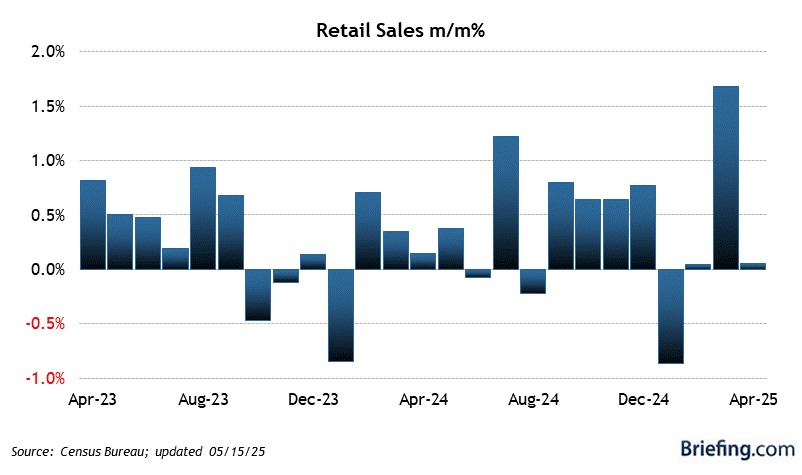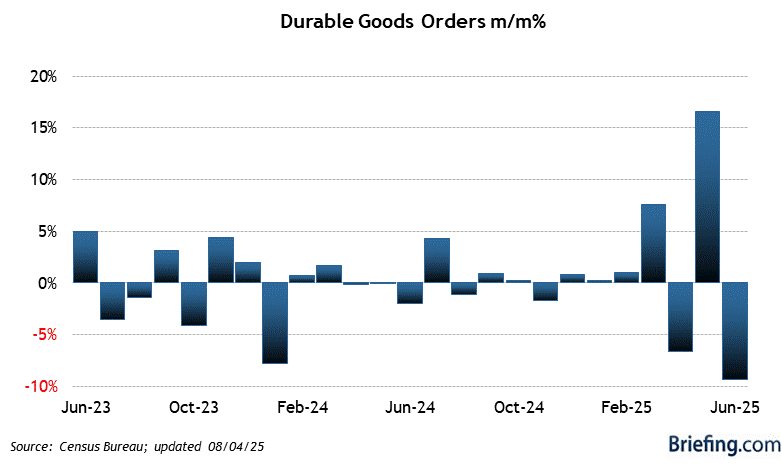What that headline refers to is these two sentences regarding consumer spending from the summary section of the fourth quarter Gross Domestic Product (GDP) report for the last quarter of 2014:
Real personal consumption expenditures increased 4.3 percent in the fourth quarter, compared with an increase of 3.2 percent in the third. Durable goods increased 7.4 percent, compared with an increase of 9.2 percent.I have difficulty understanding where all this growth came from in personal consumption and durable goods purchases. That's because separate monthly reports on retail sales and durable good orders tell a completely different story.
First, let's take a look at a chart of the percent of increase/decrease from month-over-month for retail sales (which is a component of personal consumption expenditures).
From this graphic, you can see retail sales fell by nearly a full percentage point in December. In the prior two months, which rounds out the fourth quarter, month-over-month increases were both less than 1/2 percent each. In essence, retail sales for the fourth quarter, when averaged, were actually down slightly. So, if consumer spending at the cash register was so weak, how is it that overall consumption was able to come in at an increase of 4.2% from the previous quarter? Well, the only real explanation is that all the other consumables that don't make up retail sales -- like healthcare and insurance on your house and car -- had to have seen some serious inflation in the fourth quarter. But, that too is in conflict with this statement on inflation in the same GDP report:
The price index for gross domestic purchases, which measures prices paid by U.S. residents, decreased 0.3 percent in the fourth quarter, in contrast to an increase of 1.4 percent in the third.As the report states, there was no inflation because gross prices actually fell; and, that fact alone makes is even harder to explain the 4.2% increase in consumption.
Then, there's the durable goods order increase of 7.4%. So you understand, durable goods are things we or companies buy that last a long time. Things like aircraft and appliances like refrigerators or stoves. But, again, this huge increase doesn't jive with individual monthly reports on durable goods orders growth.
As you can easily see, every monthly change in durable goods orders was negative from August through December. Call me crazy, but it is a little hard to add up a bunch of negatives and get a positive 7.4%.
In my mind, the only reason that this report wasn't negative for GDP growth was because of the hard-to-believe strength in personal consumption and durable goods ordering. Now, the people who put this report together have 3 more months to revise their data. Could it be that this report was purposely "adjusted" this first time around so as not to embarrass their boss, Barack Obama, after he made such a big thing of the economy in the State of the Union address? We'll see if future revisions are downward.
References:
US economy cools in fourth quarter, but consumer spending shines: http://www.reuters.com/article/2015/01/30/us-usa-economy-idUSKBN0L30BC20150130
Gross Domestic Product: Fourth Quarter and Annual 2014 (Advance Estimate): http://www.bea.gov/newsreleases/national/gdp/gdpnewsrelease.htm
Obama heralds economic recovery in State of the Union: http://www.msnbc.com/msnbc/obama-heralds-economic-recovery-state-the-union-address






No comments:
Post a Comment